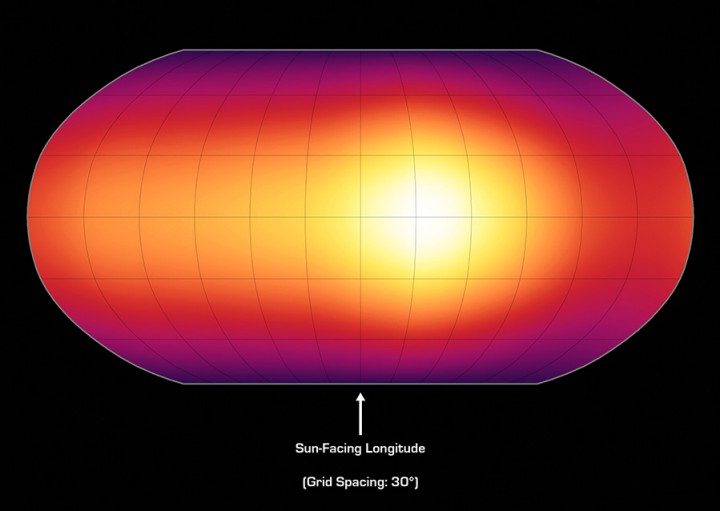
|
Explanation: HD 189733b is a Jupiter-sized planet known to orbit a star some 63 light-years away. But while the distant world is approximately the size of Jupiter, its close-in orbit makes it much hotter than our solar system's ruling gas giant. Like other detected hot Jupiters, its rotation is tidally locked -- one side always faces its parent star as it orbits once every 2.2 days. Using infrared data from the Spitzer Space Telescope, this planet's temperature variations have been mapped out -- the first map ever made for a planet beyond our solar system. Seen here (brighter colors = higher temperatures), the hottest spot on the planet is not at longitude 0.0, the point exactly facing the parent star. Instead, it's about 30 degrees to the east (right), evidence that fierce, planet circling winds influence the temperature. In the planet-wide map, the temperature measurements vary from about 930 to 650 degrees C (1,700 to 1,200 F).
|
January February March April May June July August September October November December |
| ||||||||||||||||||||||||||||||||||||||||||||||||
NASA Web Site Statements, Warnings, and Disclaimers
NASA Official: Jay Norris. Specific rights apply.
A service of: LHEA at NASA / GSFC
& Michigan Tech. U.
Based on Astronomy Picture
Of the Day
Publications with keywords: extrasolar planet - infrared
Publications with words: extrasolar planet - infrared
See also:
- APOD: 2025 February 23 Á Saturn in Infrared from Cassini
- APOD: 2024 July 8 Á Exoplanet Zoo: Other Stars
- Temperatures on Exoplanet WASP 43b
- Epsilon Tauri: Star with Planet
- APOD: 2023 October 17 Á PDS 70: Disk, Planets, and Moons
- APOD: 2023 September 20 Á Methane Discovered on Distant Exoplanet
- APOD: 2023 June 6 Á Star Eats Planet
